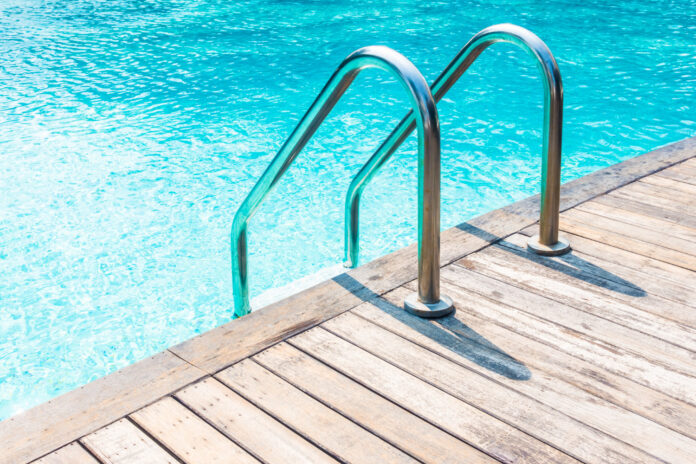Docks are an essential feature for boat owners, providing a stable platform to access the water. Whether you are embarking on a leisurely sail or preparing for a day of fishing, having a reliable dock access solution is vital. The transition from dock to boat or water requires equipment that balances safety, durability, and ease of use. Aluminum steps and dock ladders are two common choices that offer these qualities, each catering to different preferences and requirements. Let’s delve into each option to understand their unique benefits.
Choosing the right access solution also involves considering the environmental conditions your dock faces. Both aluminum steps and dock ladders are designed to withstand the challenges posed by marine environments, but they do so in different ways. While aluminum is resistant to rust and corrosion, the structural design of each option plays a significant role in how well they hold up over time. Understanding these differences can help you make an informed decision that aligns with your specific docking needs.
Aluminum Steps for Docks
Aluminum steps for docks are designed to provide a stair-like transition from the dock to the water. They are typically wider and more stable than ladders, making them a great choice for those who prioritize safety and ease of use. These steps often include non-slip surfaces and handrails, further enhancing their safety features.
The design of aluminum steps also allows for customization to fit the aesthetic and functional needs of your dock. Whether you prefer a sleek, modern look or a more traditional design, aluminum steps can be tailored to match your dock’s appearance. Additionally, their robust construction ensures they can support significant weight, accommodating multiple users or individuals carrying heavy gear.
Advantages of Aluminum Steps
- Stability: Aluminum steps offer a firm and steady platform, reducing the risk of slipping and falling. This is especially important for children and elderly individuals who may have difficulty with traditional ladders. The wide, flat steps provide ample space for secure footing, even in wet conditions, making them a reliable choice for users of all ages.
- Ease of Use: With a design similar to regular stairs, aluminum steps are intuitive and easy to navigate. This makes them an ideal choice for individuals with mobility issues or those carrying equipment. The gradual incline and supportive handrails contribute to a user-friendly experience, ensuring that accessing the water is as straightforward as walking down a flight of stairs.
- Durability: Constructed from aluminum, these steps are resistant to rust and corrosion, ensuring a long lifespan even in harsh marine environments. The use of high-quality materials and robust construction techniques means that aluminum steps can withstand the test of time, providing a dependable access solution for many years.
- Aesthetic Appeal: Aluminum steps can be designed to complement the overall look of your dock, enhancing its visual appeal. With various finishes and design options available, these steps can seamlessly integrate into your dock’s design, adding a touch of elegance and sophistication.
Disadvantages of Aluminum Steps
- Space Requirement: Aluminum steps typically require more space than ladders, which may not be suitable for small docks or restricted areas. The need for a broader footprint can limit their application in docks where space is at a premium, necessitating careful planning and consideration of available area.
- Cost: Due to their larger size and more complex design, aluminum steps can be more expensive than dock ladders. The initial investment may be higher, but for those who value safety and ease of use, the benefits often outweigh the costs. However, budget constraints might lead some to consider more affordable alternatives.
Dock Ladders Aluminum
Dock ladders made of aluminum are a more traditional and compact solution for accessing the water. They are designed to be mounted directly to the dock, providing a vertical path to the water. This straightforward design makes them a popular choice for docks where space and simplicity are key considerations.
Dock ladders are often equipped with features that enhance their utility and convenience. Many models include foldable or telescoping designs, allowing them to be easily stored when not in use. This flexibility makes dock ladders an excellent option for seasonal docks or locations prone to fluctuating water levels, where adaptability is crucial.
Advantages of Dock Ladders
- Space Efficiency: Dock ladders take up minimal space, making them ideal for smaller docks or areas with limited room. Their compact design allows them to fit into tight spaces without obstructing dock activities, providing a practical solution for maximizing dock area.
- Cost-Effective: Generally, dock ladders are less expensive than aluminum steps, making them a budget-friendly option. For those looking to balance functionality with affordability, dock ladders offer an economical choice that does not compromise on essential features.
- Flexibility: Many dock ladders are designed to be removable, allowing for easy storage during the off-season or in bad weather. This feature ensures that the ladder can be protected from harsh conditions, extending its lifespan and maintaining its appearance.
- Variety: Dock ladders come in various designs, including folding and telescoping models, providing flexibility in terms of use and storage. This variety allows users to select a ladder that best fits their specific needs, whether prioritizing compact storage or ease of access.
Disadvantages of Dock Ladders
- Limited Stability: Ladders are less stable than steps, which can be a concern for those with balance issues or when carrying heavy gear. The vertical climb can pose challenges, especially in wet or slippery conditions, where sure-footedness is paramount.
- Accessibility: Climbing a ladder can be challenging for some, especially for young children or older adults who may struggle with the vertical climb. This limitation can restrict the ladder’s usability for a diverse range of users, potentially necessitating additional access solutions for certain individuals.
- Wear and Tear: While aluminum is resistant to rust, frequent use of a ladder can lead to wear on the rungs, potentially compromising safety over time. Regular maintenance checks are essential to ensure the ladder remains safe and functional, addressing any signs of wear promptly.
Comparing Safety and Accessibility
When it comes to safety and accessibility, both aluminum steps and dock ladders have their pros and cons. Here’s a quick comparison to help you decide which might be better for your dock.
Safety
- Aluminum Steps: Offer a higher level of safety due to their stable and wide design. They reduce the risk of falls and are easier to navigate for individuals with mobility challenges. The added stability and non-slip features contribute to their reputation as a safer option for diverse user groups.
- Dock Ladders: While generally safe, they can pose a risk for those with balance or mobility issues due to the vertical nature of climbing. The narrower rungs and steeper ascent require careful navigation, making them less suitable for users who require additional support.
Accessibility
- Aluminum Steps: Provide easier access for a wider range of individuals, including children, seniors, and those with disabilities. The stair-like design simplifies the transition from dock to water, accommodating users who might struggle with traditional ladders.
- Dock Ladders: May be less accessible for some, but they offer a compact solution that fits well in limited spaces. For docks where space is a primary concern, ladders provide an efficient way to maintain access without sacrificing valuable dock area.
Practical Considerations
When deciding between aluminum steps and dock ladders, consider the following practical aspects:
- Dock Size and Layout: Ensure the chosen access solution fits well within the available space and complements the dock’s design. A well-integrated access solution not only serves its functional purpose but also enhances the overall aesthetic and usability of the dock.
- User Needs: Consider who will be using the dock most frequently and choose the option that best suits their needs and abilities. Tailoring your choice to the primary users ensures that the access solution meets their expectations and enhances their experience.
- Budget: Balance the cost with the desired level of safety and accessibility. While aluminum steps may require a larger investment, their benefits could justify the expense for those prioritizing long-term safety and ease of use.
- Maintenance: Both aluminum steps and ladders require minimal maintenance, but regular checks for wear and tear are essential. Keeping your access solution in top condition ensures safety and longevity, preventing potential issues before they arise.
Conclusion
In the debate between aluminum steps for docks and dock ladders aluminum, the best choice depends on your specific needs and preferences. Aluminum steps provide greater stability and are more accessible, making them ideal for those prioritizing safety. Their robust construction and user-friendly design make them a preferred choice for families and individuals with mobility concerns.
On the other hand, dock ladders offer a space-saving, cost-effective solution that works well in compact areas. Their versatility and affordability make them an attractive option for those with limited space or budget constraints. Ultimately, consider the layout of your dock, the primary users, and your budget to make an informed decision. Whichever option you choose, both aluminum steps and ladders provide durable and reliable access to your dock, enhancing your boating experience. With the right choice, you can ensure a safe and enjoyable transition between land and water, tailored to your unique docking environment.
































